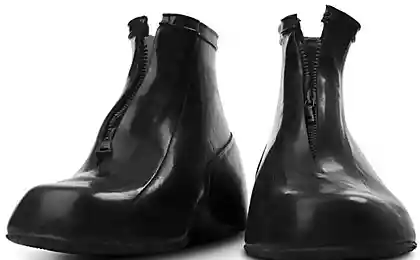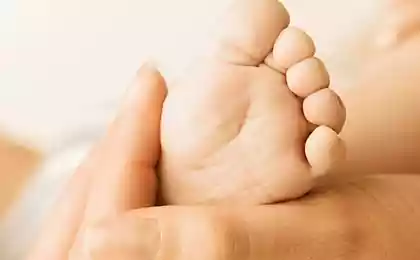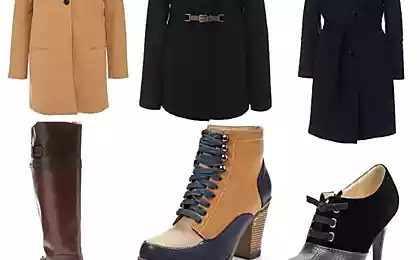233
Young people do not know what burkas and bots “Goodbye, youth!” are.
Shoes in the USSR were not very diverse. After all, first of all, the products had to be practical and durable, and only then beautiful or fashionable. But even in this poor assortment you can find amazing specimens that will put modern youth at a dead end. For example, Russian burkas. What are they, boots, or galoshes?

On the feet of the leader of the Cuban revolution and film hero Evgeny Morgunov not boots and not boots with galoshes. Such shoes are called burki and were quite common in the USSR. In severe frosts, residents of the Far North, chairmen of collective farms, builders, policemen, huntsmen and hunters flaunted in it.

Unlike boots, burkas did not roll, but sewed from individual parts. For their production used felt, felt and natural fur. At the same time, felt is usually not so prickly, white and thinner than that of boots. In addition, there is a rigid sole and bottom of the skin, which should protect the shoes from getting wet and give it greater durability.
View this post on Instagram
Post from Custom-made Shoes (@grigorievfamily)
In the USSR, burkas were less common than valenki. And not least because of the higher cost and complexity of production. Since the late 1960s, this type of shoe has gradually gone out of fashion. But today burkas, decorated with embroidery, application and inserts of leather, are again gaining popularity.
Chuvyaks call soft open leather shoes without heels, which have long been worn by both men and women in the Caucasus and in the Crimea.

Coming from the South, vacationers often brought similar models. And today they are produced mainly as work shoes, as well as for folklore ensembles.
Farewell to Youth Bots! The Soviet shoe factories carried out and carried out the plan year after year. The industry produced millions (257 million in 1954) of pairs of shoes, but when he came to the shoe store with the hope of buying sports shoes, the young man often found only dull bots with the sarcastic name “Goodbye, youth!”

The top of this truly cult model was made of felt or felt with insulation. The sole poured out of rubber, and on the front surface was a zipper. Soft bots were popular with older people with arthritis, because they were much more comfortable to wear than hard leather shoes. Maybe that's where the name comes from.

In general, the word bots endowed with an amazing variety of meanings. In addition to special computer programs, almost any demi-season shoes are called so. In the USSR, for example, rubber bots (bots) were popular, which were worn over shoes in wet slush weather.

From ordinary galoshes, they were distinguished by a high height, sometimes the presence of a cloth top and fasteners. Even models with high heels were produced. It remained only to put them on model shoes and you could safely go to the neighboring village for a disco.

On the feet of the leader of the Cuban revolution and film hero Evgeny Morgunov not boots and not boots with galoshes. Such shoes are called burki and were quite common in the USSR. In severe frosts, residents of the Far North, chairmen of collective farms, builders, policemen, huntsmen and hunters flaunted in it.

Unlike boots, burkas did not roll, but sewed from individual parts. For their production used felt, felt and natural fur. At the same time, felt is usually not so prickly, white and thinner than that of boots. In addition, there is a rigid sole and bottom of the skin, which should protect the shoes from getting wet and give it greater durability.
View this post on Instagram
Post from Custom-made Shoes (@grigorievfamily)
In the USSR, burkas were less common than valenki. And not least because of the higher cost and complexity of production. Since the late 1960s, this type of shoe has gradually gone out of fashion. But today burkas, decorated with embroidery, application and inserts of leather, are again gaining popularity.
Chuvyaks call soft open leather shoes without heels, which have long been worn by both men and women in the Caucasus and in the Crimea.

Coming from the South, vacationers often brought similar models. And today they are produced mainly as work shoes, as well as for folklore ensembles.
Farewell to Youth Bots! The Soviet shoe factories carried out and carried out the plan year after year. The industry produced millions (257 million in 1954) of pairs of shoes, but when he came to the shoe store with the hope of buying sports shoes, the young man often found only dull bots with the sarcastic name “Goodbye, youth!”

The top of this truly cult model was made of felt or felt with insulation. The sole poured out of rubber, and on the front surface was a zipper. Soft bots were popular with older people with arthritis, because they were much more comfortable to wear than hard leather shoes. Maybe that's where the name comes from.

In general, the word bots endowed with an amazing variety of meanings. In addition to special computer programs, almost any demi-season shoes are called so. In the USSR, for example, rubber bots (bots) were popular, which were worn over shoes in wet slush weather.

From ordinary galoshes, they were distinguished by a high height, sometimes the presence of a cloth top and fasteners. Even models with high heels were produced. It remained only to put them on model shoes and you could safely go to the neighboring village for a disco.
Inspiring clothes Monica Bellucci, which you can admire forever, and some even want to repeat
What to do and where to run when stores stop selling plastic bags























